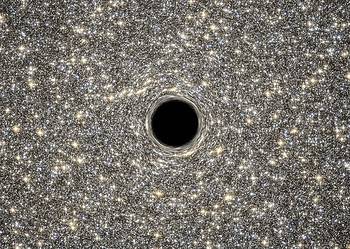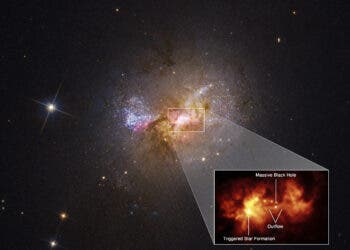The Tarantula Nebula doesn’t sound like the most romantic place in the Universe. But a composite image containing some of the deepest X-ray images ever taken shows the region as a cosmic flower arrangement. Happy Valentine’s!

A stellar nursery
Doradus 30, also known as 30 Doradus or the Tarantula Nebula, is a massive star-forming region located in the Large Magellanic Cloud, a satellite galaxy of the Milky Way. Spanning nearly 1,000 light-years, it is one of the most active stellar nurseries in the universe. And it’s home to some of the most massive and luminous stars ever observed.
At its core lies the young and dense star cluster R136, which contains several stars exceeding 100 times the mass of the Sun. Due to its intense ultraviolet radiation and stellar winds, 30 Doradus plays a role in shaping its surrounding interstellar medium, making it an ideal laboratory for studying star formation and stellar evolution.
In fact, this cluster contains some of the youngest stars astronomers have ever found, with ages of 1-2 million years old — the blink of an eye for cosmic processes. For comparison, our Sun has an age of around 5 billion years.
“In this image, the X-ray wind and gas takes the shape of a massive purple and pink bouquet with an extended central flower, or perhaps a leaf from a maple tree,” NASA whimsically describes the photo.
“The hazy, mottled shape occupies much of the image, positioned just to our left of center, tilted slightly to our left. Inside the purple and pink gas and wind cloud are red and orange veins, and pockets of bright white light. The pockets of white light represent clusters of young stars. One cluster at the heart of 30 Doradus houses the most massive stars astronomers have ever found.”
The Chandra observer

The image above was taken by the Chandra observer, who studied the nebula for 23 days. Chandra found a mixture of massive and bright stars still in the process of forming, as well as a few smaller, more mature stars. There’s also a lot of hot, diffuse gas. Far from being just a pretty pic, this dataset will be the best available for the foreseeable future for studying diffuse X-ray emission in star-forming regions.
The extended observation time dedicated to this cluster enables astronomers to monitor changes in 30 Doradus’ massive stars. Many of these stars belong to binary systems, and their movements can be tracked by variations in X-ray brightness.

A paper describing these results appeared in the Astrophysical Journal






